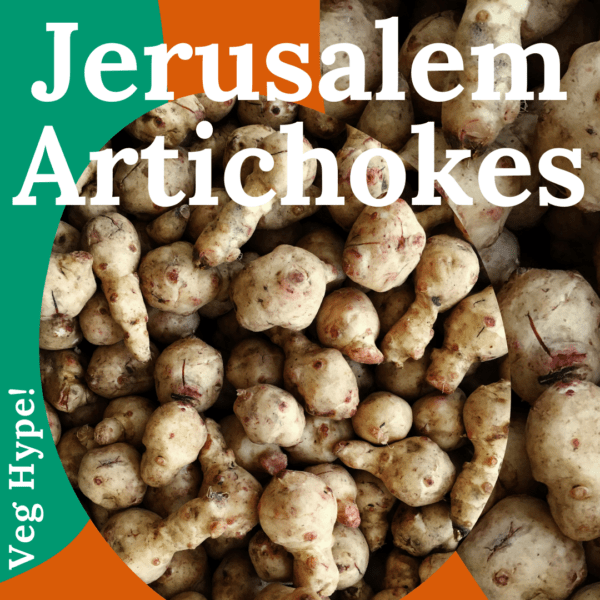
Jerusalem artichokes have a knobby appearance, similar to ginger, and vary in size and shape. Their flavour is slightly sweet and nutty, and their texture is crisp when raw and becomes softer when cooked.
Sunroot, Sunchoke, Earth Apple but not from Jerusalem
Known by many names, Jerusalem artichokes are actually native to central North America. The name is thought to have derived from the Italian girasole, meaning sunflower or ‘towards the sun’. It kind of makes sense as Jerusalem’s flowers are beautifully yellow and look like mini sunflowers.
Jerusalem artichoke tubers became a very common vegetable for human consumption in Europe by the mid-1600s. Cheap and available in London and in Paris, and Jerusalem Artichokes soups and dishes were featuring even in the most exquisite menus.
Naturally Good
The knobby tubers of Jerusalem artichokes store carbohydrates as inulin, a starch distinct from sugar and unutilized by the body for energy. This unique property positions them as an ideal potato substitute for diabetics, offering a filling quality without being absorbed by the body. Furthermore, there’s evidence suggesting they contribute to blood sugar control.
With a natural richness in fructose, Jerusalem artichokes find use in crafting brandy with a delightful nutty sweet flavour. Not only are they a flavourful choice, but they’re also high in dietary fibre, promoting excellent gut health. Boasting essential nutrients such as iron for oxygen transport, phosphorus for strong bones and teeth, and thiamin (vitamin B1) for carbohydrate metabolism assistance, Jerusalem artichokes present a comprehensive and healthy option that’s simply too good to overlook!
How to Prepare Jerusalem Artichokes
Before cooking or consuming Jerusalem artichokes, thoroughly scrub the tubers with a vegetable brush. Peeling can be challenging due to protuberances, but it’s unnecessary as the skins are not only edible but also the most nutritious part, like most vegetables. If you prefer peeling, remove smaller bumpy areas and the skin using a vegetable peeler.
For cooked consumption, consider boiling or steaming them whole and unpeeled, making peeling easier afterward if needed. To rejuvenate a limp, dehydrated artichoke, soak it in water overnight; it will regain firmness, becoming rock solid.
How to Cook
With similar consistency and texture to potatoes, Jerusalems can be mashed, baked, boiled, steamed, fried, and stewed, and combined with potatoes and other root veg in most dishes. Here’s a few of our favourite ways to enjoy them:
- You must try mashed Jerusalem artichokes! Just boil with equal amount of spuds till tender. Mash with butter, salt and pepper. For extra luxury, add a little nutmeg and Parmesan!
- Use them in soup. This Jerusalem artichoke soup with a yogurt and hazelnut dressing was highly recommended by a farm customer. For another delicious soup, combine Jerusalems, potatoes and celeriac. Parsley and crushed garlic will finish it very nicely.
- Roasted Jerusalems is a quick and easy way to enjoy these nutty beauties. Just mix with hazelnuts and goat’s cheese and you’ll get a tasty meal or side dish.
- Sautéing is another way to cook Jerusalem artichokes – versatile, simple and keeps them firm and crunchy. Olive oil, garlic, bay leaves, some nuts – that’s all you need and dinner is ready!
- Winter stews are another option. Most roots go well together, and try adding onion and celery, a bit of red wine, tomato paste, thyme and garlic to give your stew an exquisite taste to remember.
- With their crisp texture and sweet, nutty flavour, they can also be eaten raw. Try with carrots, celery, pears or oranges – slice thinly and mix with a mustard based dressing.
Jerusalem Artichokes Love…
Garlic, black pepper, nutmeg, thyme, parsley, rosemary, sage, cream, Parmesan, beef, lamb, hazelnuts